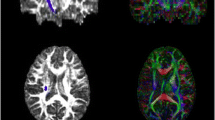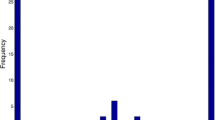Abstract
The primary issues addressed in this study were: (1) determination of the significance of the classification “good outcome” utilizing the Glasgow Outcome Scale (GOS) in children at least 1 year after brain injury; (2) detection of residual lesions of brain parenchyma in these children upon follow up MRI scans; and (3) detection of relationships between neuropsychological test performance and MRI results. Selection criteria included children 6–15 years of age at the time of testing who received an initial CT scan at the time of their head injury and who had been injured at least 12 months prior to the follow up test. Only children who did not demonstrate neurological disability at the time of follow up examination were selected. The children showed a status of “good outcome” as defined by the GOS. Neurological examination, neuropsychological tests and an MRI were done. The test results of 59 patients were compared to those of a matched control group. Children, after receiving head injuries, showed significantly poorer results with respect to cognitive, motor and fine motor skills. Of all MRI-scans 66% revealed pathological findings. Cortical lesions were detected on MRI in 14% of cases; subcortical injuries were detected in 12% and, deep white matter lesions in 31%. Furthermore, corpus callosum damage was observed in 26% of cases. Pathological MRI findings were also observed in children with mild head injuries. All of the children with normal MRI findings showed abilities comparable to those of children in the control group. Patients with cortical lesions exhibited only motor deficits, whereas motor and cognitive deficits were seen in patients with deep white matter lesions. Children with multiple lesions demonstrated test results in all variables 1 to 2 standard deviations below those of the control group.
Conclusions Children suffering a brain injury who 1 year later are classified within the “good outcome” group according to the Glasgow Outcome Scale often have significant morphological and functional brain deficits.
Similar content being viewed by others
Author information
Authors and Affiliations
Additional information
Received: 6 January 1996 / Accepted: 10 August 1996
Rights and permissions
About this article
Cite this article
Koelfen, W., Freund, M., Dinter, D. et al. Long-term follow up of children with head injuries-classified as “good recovery” using the Glasgow Outcome Scale: neurological, neuropsychological and magnetic resonance imaging results. Eur J Pediatr 156, 230–235 (1997). https://doi.org/10.1007/s004310050590
Issue Date:
DOI: https://doi.org/10.1007/s004310050590




